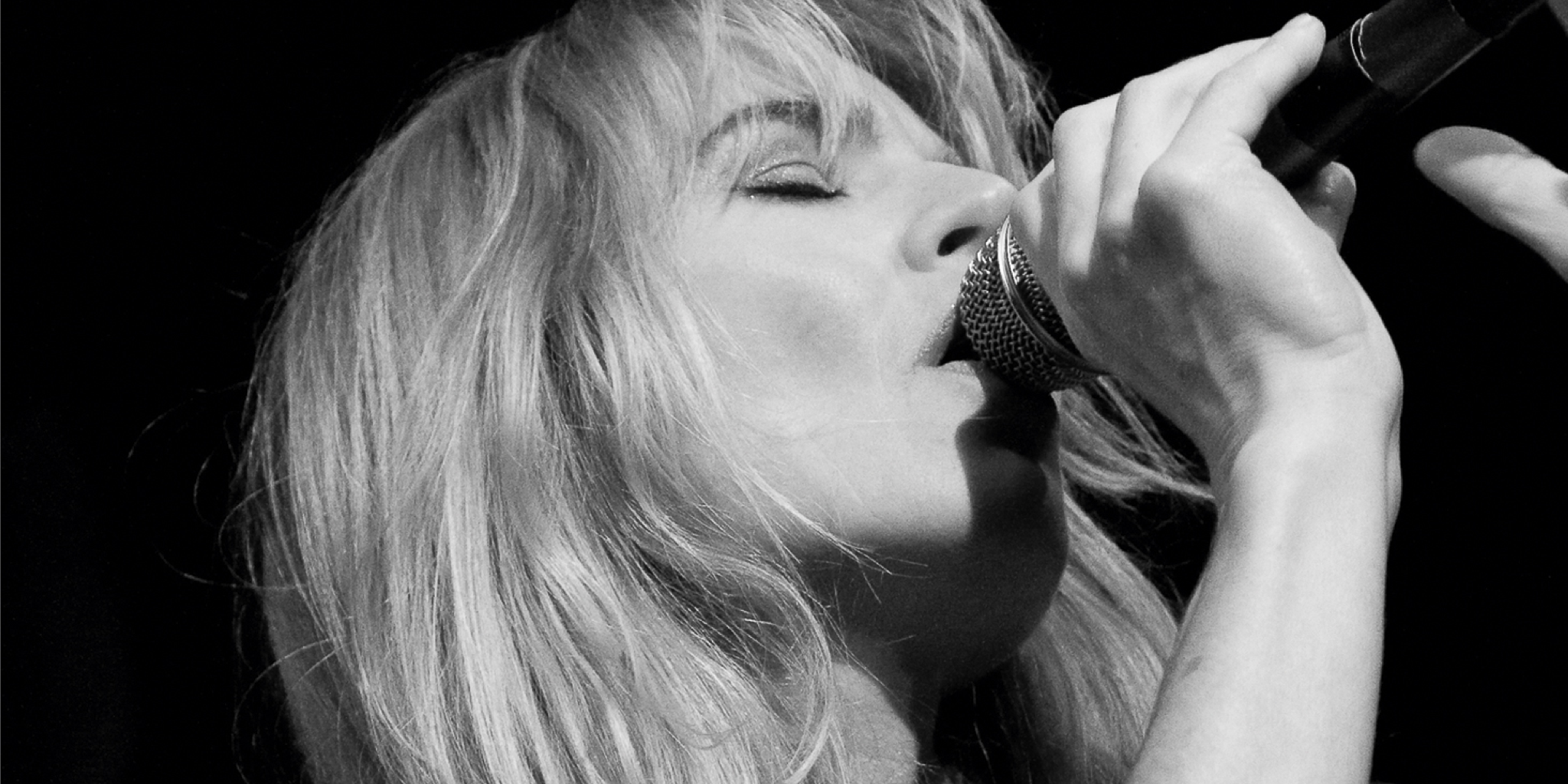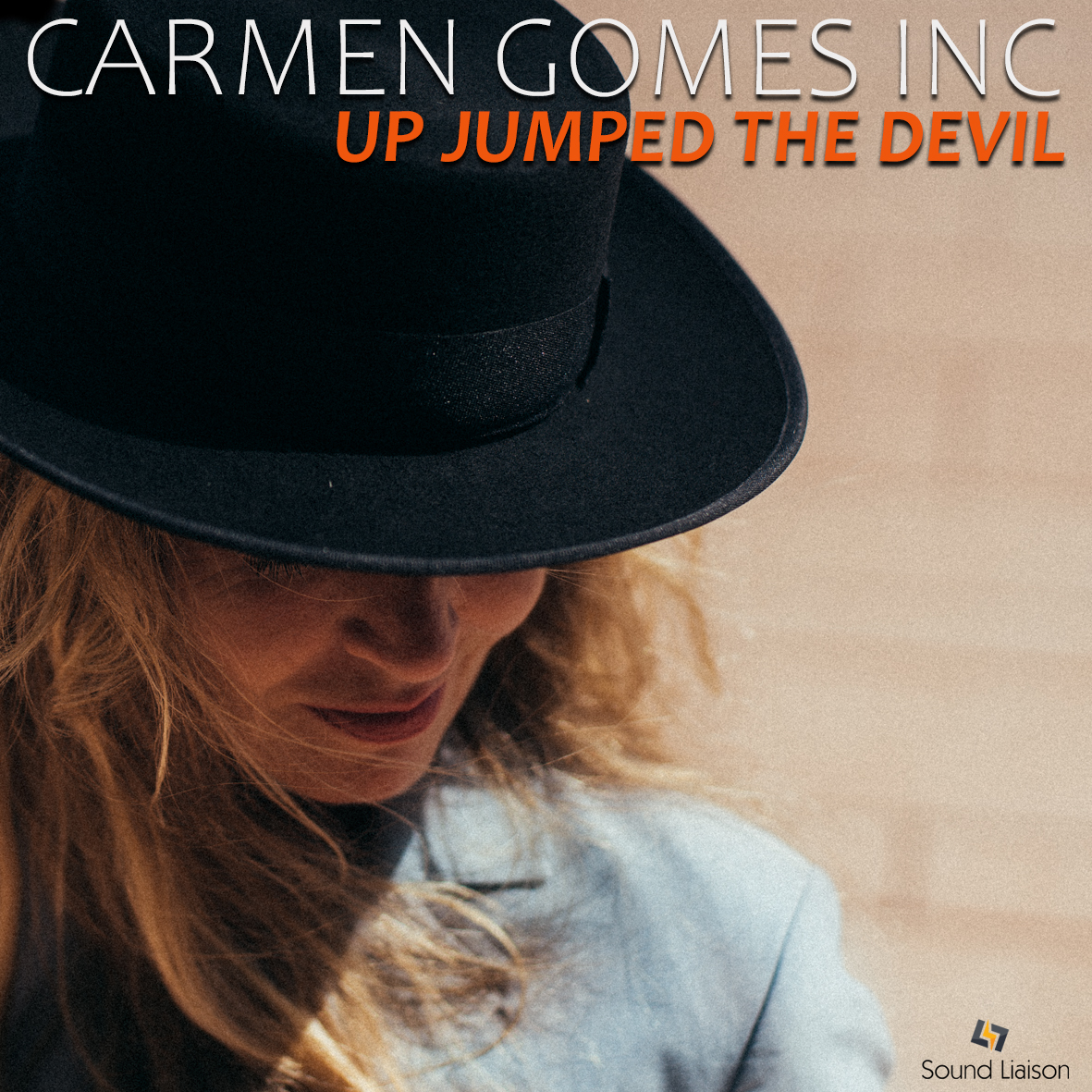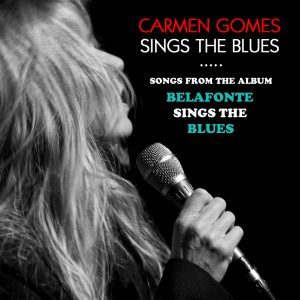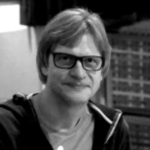To celebrate the release of this wonderful new album ‘Ray!’, NativeDSD Music offers a 20% discount on the earlier albums of Carmen Gomes Inc. until January 10th, 2022:
– Carmen Gomes sings the Blues (click here)
– Up Jumped The Devil (click here)
– Don’t You Cry (click here)
Carmen Gomes Inc. release new album: Ray!
“We started working on Ray! in the unencumbered period before the adversity of Covid 19 came upon us. In the darkest period of lockdowns, we left it alone, and recorded ‘Up Jumped the Devil’ which somehow was more in sync with the life we were living in that period. When the restrictions were lifted, it felt just like Ray’s song ‘the Sun is Gonna Shine Again’; everything seemed possible.
We recorded the last part of the album this summer. And a long and beautiful summer it was, a summer which made one feel grateful for all that seemed so self-evident before.
Mixing and mastering was finished just before the sky clouded over and another wave came upon us. But I still have faith.Together we are strong and we have music to get us through this. Because “Music is about the only thing left that people don’t fight over” as Ray Charles used to say.
To me this album represents a ray of light in the midst of the darkness and I hope it can be that for you as well.”
— Carmen Gomes
Producer Peter Bjørnild tell us:
We quickly realized that we did not want to make a tribute album. Rather we would pay our respects to Ray by following the advice Ray gave to Willie Nelson at a recording session; “Don’t think about how anybody else does it, just do it the way that YOU feel it.” So we took the songs back to their bare essentials, tried to hear them as if they had just been written and in so doing making them our own.
It is of course impossible to completely reject the sound of the originals, here and there a small citation did creep in. Listen to the last bar of ‘Let the Good Times Roll’ and you’ll hear what I mean.
Carmen Gomes Inc. is a band: 4 musicians all having their say in how a song is being shaped in the moment it is being played. The key to this approach is trusting each other, keeping up a musical dialogue while respecting the framework of the song. Let me offer three songs from the album as an example on how we went to work on Ray’s music.
The Sun is Gonna Shine Again; the song is kept to an absolute minimum with only the double bass commentating on the lyrics with small melodic motifs. The lyrics are so typical of Ray Charles’ eternal optimism and at the same time they sum up the hope we all have in these troubled times that the sun is gonna shine again. The song was actually the working title for the album but our highly regarded head of marketing over at Native DSD; Floor van der Holst, suggested that Ray! would be more to the point and fit Milan Bjørnild’s beautiful cover photo perfectly.
Next up is CC Rider. Here Tettero’s guitar is the 2nd protagonist in this story of a love affair taking a wrong turn. The guitar is of equal importance to Gomes’ voice, it’s the CC Rider Carmen is singing about. Listen how they keep on challenging each other yet never get in each other’s way. That kind of communication and musical empathy is a rare find in music. It is a chemistry that only years of playing together can achieve.
In Drown In My Own Tears, the guitar and bass take a step back, creating space in order to let drummer Bert Kamsteeg take on the role of 2nd main character in the small tragic play this song is. Here Kamsteeg treats his drums more like a bunch of percussion instruments than a drum kit in order to emphasize the intense sadness of the lyrics.
Sometimes my dreams are so deep that I dream that I’m dreaming.
Ray Charles
Recording Engineer Frans de Rond continues:
The 2 most important engineers in Ray Charles’ oeuvre were Tom Dowd and his protege Al Schmitt. The story goes that before Ray Charles, Tom Dowd and Al Schmitt started working together, tape recording levels were kept safely way below the limit. But Charles, Dowd and Schmitt realized that by carefully getting close to the limit, a beautiful light colorization of the upper harmonics took place.
In tribute to the 2 engineers I decided to use an analog signal chain to master the DXD recording to a Studer A80 reel to reel tape recorder in order to get that little bit of ‘tape saturation’ that Ray Charles liked so much, keeping in mind Tom’s and Al’s love for minimalistic equalization and very little compression.
The various reverb techniques used on the album were inspired by Al Schmitt’s work. I have added a bit of depth to the beautiful natural ambience captured in the hall by carefully chaining reverb units at minimal settings. This technique helped the sound of the album become more coherent despite the different recording techniques applied, following the rules of the Arch Manifesto.
— Frans de Rond

About the Arch Manifesto
Each recording starts and ends with the main artist alone in the hall the only interplay being the acoustics of the hall and his own mind. No audience is present except the ghosts from the past. When the band enters the music must create an Arch, going from the single instrument performance to the more complex band performance and back to the last solo performance. The same principle goes for the engineering; each recording starts out with only one microphone (stereo). As the music gains in complexity more microphones may be deployed, the only limit being the imagination and technical skills of the recording engineer. The producer and engineer must make the album feel as one, it should have a unifying ‘sound’, despite the different recording techniques employed.
Frans always says; “The art of recording is a question of listening and the more you listen the better you get at it.” I was curious to see how all the completely phase coherent listening Frans had been doing creating the masters of the ‘One Mic’ and ‘One Mic+’ series would affect his decisions when giving him almost free rein with a multi mic setup. I was not disappointed. His great knowledge of mic placement and phase manipulation seemed to have grown even further.

Frans has a second life as engineer and sound scape specialist for radio plays. He has received several awards for his work, the prestigious Prix Europe 2020 being the latest. I believe that his unique ability to make the sound of the instruments real and visual is a cross-pollination from his excellent work with Radio plays.
For each piece of music we would ask the band to play it through once and there after deploy the microphones needed. Oftentimes the musicians on hearing the playback would suggest small alterations in the music to make the music fit the sound. We were trying to create a sound that would fit the music and the musicians got inspired by the sound to develop the music even further.
The circle was complete.
All Sound Liaison albums have the Frans de Rond Visual Sound signature; great depth, clear placement and an almost physical presence of the musicians. Especially our One Mic recording series has been noticed in the world of audio recording. When the Josephson C700S microphone is used to its fullest, the result is a completely phase coherent recording with a superior realism.
— Peter Bjørnild
The 3 earlier Carmen Gomes Inc. releases at 20% Off
The discount is automatically applied in your cart until January 10th, 2022.





